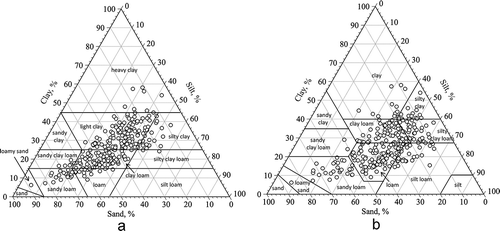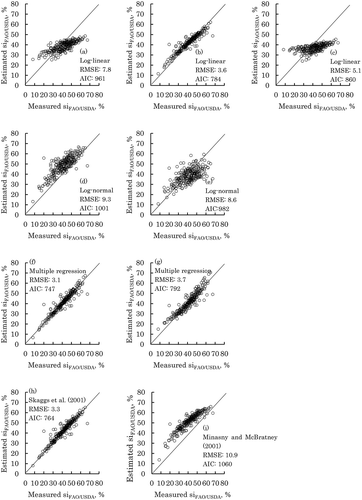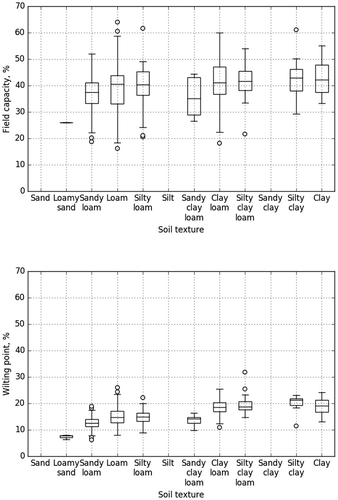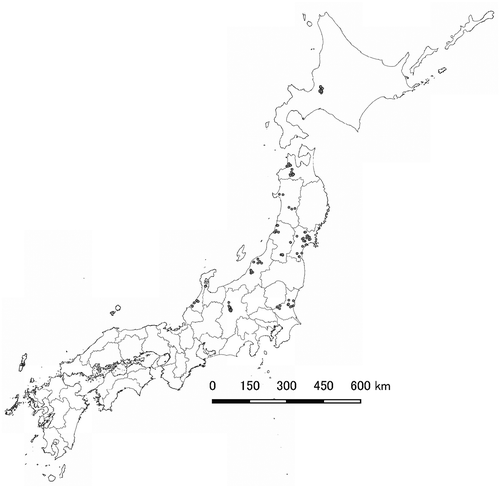Figures & data
Figure 1. Ternary diagram of soil texture classification by ISSS and FAO/USDA system (n = 267). Every used soil is plotted by each particle size fraction and texture classification

Table 1. Distribution of soil groups of used soils by comprehensive soil classification system of Japan First Approximation (Obara et al. Citation2011)
Table 2. Comparison of various methods to estimate silt contents by FAO/USDA system from ISSS soil particle size distribution (n = 267)
Figure 3. Comparison of various methods to estimate silt contents of FAO/USDA (siFAO/USDA) from ISSS soil particle size distribution. The alphabet in the parenthesis in the first line of each graph correspond to the symbols in

Table 3. The standard deviations (sd) and coefficient of variations (cv) of four cross-validations by using multiple regression EquationEquations (8)(8)
(8) and (Equation9
(9)
(9) )
Table 4. Accuracy ratio of classification of soil texture to FAO/USDA system from estimation by multiple regression of EquationEquation (8)(8)
(8) and EquationEquation (9)
(9)
(9) with ISSS soil particle size distribution
Table 5. The relationship between soil texture classification by FAO/USDA and some corresponded moisture properties in Japanese paddy soils and comparison to the ‘typical values’ given by Allen et al. (Citation1998)
Figure 4. Boxplots for the relationship between soil texture categorized by FAO/USDA classification system and field capacity (−3.1 kPa; n = 350) or wilting point (−1500 kPa; n = 417) in Japanese paddy soils


